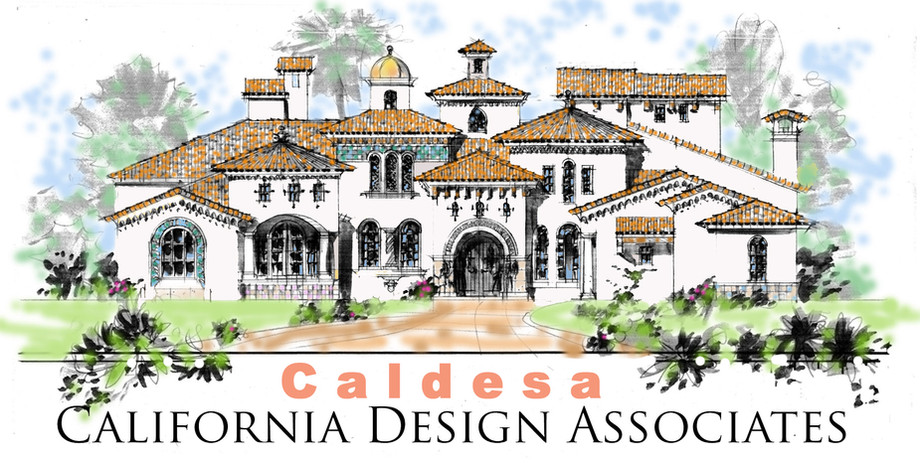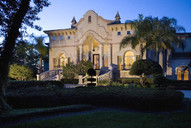Beautiful Italian Meditteranean Designs from which to select and modify per your Specifications
The charm and history of Mediterranean-style houses have captivated American homeowners, architects, and builders. These dwellings, originating in the Mediterranean region, evoke a sense of simplicity, geometric integrity, vibrant colors, and the use of earthy materials that are irresistibly appealing to many.
While these houses were originally designed for warm and dry climates, they have been adapted and reconstructed in various regions across the United States, including humid areas like Florida and Texas, as well as drier states such as Arizona, New Mexico, and California. These houses have even been found in rainy and cold regions, showcasing their versatility and enduring popularity.
A visit to countries like Turkey, Greece, Italy, Portugal, Spain, France, or Morocco reveals a charming sight of whitewashed houses with multicolored roofs nestled closely together. However, there are distinct differences influenced by local culture, building practices, and the availability of materials, resulting in unique regional or local styles. Looking back in history, the older forms of Mediterranean houses were simpler and more primitive in design. In the southern and eastern Mediterranean, flat roofs were common and served as rainwater collectors for potable water storage. Dwellings were often small interlocking squares without pitched roofs. The absence of color was due to the use of limewash, which maintained cleanliness, provided resistance against bugs and mold, and reflected heat.




On the other side of the Mediterranean Sea, where a more European tradition prevailed, houses featured pitched roofs. These small houses, with single-pitched tiled roofs or sloping roofs, often had stone walls left unplastered, but those that were plastered were also painted. During the Renaissance period, a new perspective on design emerged among master masons, who drew inspiration from Greek and Roman temples. These temples became iconic in Western civilization, with their perfect symmetry being replicated from small rural hamlets to grand churches across Southern Europe and beyond. The concept of the "Mediterranean" ideal varied from region to region, influenced by climate, materials, workmanship, and the level of architectural enlightenment.
In the last century, the United States adopted elements of Mediterranean style in its architecture. Stucco, stone, and tile, combined with wood and iron details, formed the basis for various types of houses, ranging from entry-level homes to custom residences and large luxury estates. Many of these structures borrowed intricate details from Italian villas and manors. However, unlike their Old World counterparts built with stone walls clad in stucco and ceramic tile roofs over wood timbers, American versions often featured wood framing as the main structure, with a more affordable stucco finish and concrete tile roofs on wooden trusses. In some regions, concrete blocks were used for perimeter walls, providing optimal bonding for exterior plaster.
The interiors of custom houses in the United States showcase a wide range of styles, from ultra-contemporary designs to carefully chosen period details in fireplaces, moldings, and stone flooring. The "contemporary Mediterranean" style allows for complex roofing and typically asymmetrical facades due to the constraints of urban or suburban lots. Creating fully symmetrical designs becomes challenging when incorporating garages and accommodating the desired number of rooms on smaller lots.
The Romans introduced the arch, and this architectural element, known as the Palladian Arch, often juxtaposed against horizontal members, became prominent in Mediterranean-style houses. Unlike the Greeks, who did not use arches in their temples, the Romans also invented concrete, allowing them to efficiently construct public buildings with thick brick walls filled with concrete rubble.
One of the distinctive motifs of the Italian Renaissance is the graceful full round arch, which, when combined with arched windows below, contributes to the iconic Mediterranean style. Another important motif is the use of columns, not in the temple sense, but as frames for windows and doors, or rhythmically arranged on front and rear porches. These columns can range from simple to highly detailed. When decorative columns are employed, it is important to extend similar complex details to the moldings around doors and windows, as well as incorporate them as floor demarcations on the facade, among other placements.









Wood rafters and balconies are more commonly associated with Spanish Colonial architecture rather than Italian styles. In grand buildings, the entire facade and perimeter were often finished with stone veneer or lime stucco. Wood rafters under the eaves are a common feature in Northern Mediterranean houses, and they are often exposed and intricately carved in higher-end villas and palaces.
Ceramic tile, a characteristic roofing material of Southern European houses, has become an expensive choice, replaced in many entry-level to medium-quality homes with similarly profiled concrete roofing tiles. The selection of colors and mixes allows for the replication of centuries-old handcrafted and fired ceramic tiles, which were originally made using nearby silt deposits found along riverbanks. Roofs in Mediterranean-style houses can be open gable or hipped.
Towers and other roof ornamentation found in larger historical villas and palaces, including fortified elements, are often appropriated into the design of Mediterranean-style houses. With a playful touch, different combinations of classical details, simple walls, and carefully placed windows can create visually striking facades.
The modern Mediterranean house offers a vast palette of design elements, floor plans, interesting facades, and interior options. Certain treatments and profiles have become recognized regional styles, ranging from elemental designs seen in starter homes to an eclectic mix of towers, chimneys, porches, arches, columns, and more in mid-level to upper echelon custom homes. The result can be truly exotic and unique.
Italian Mediterranean Villa
The Renaissance Italian Villa is the basis for all Mediterranean luxury mansions. The historic style was popularized by Andrea Palladio, whose designs were completely symmetrical -- formulated after Roman and Greek temples. The stucco walls and gently sloping ceramic tile roof exterior treatment with stately columns and generous arches are the cues that have popularized this style from Europe to the United States. Ideal for moderate climates the high ceilings and large windows allow light and views. Covered porches tie the inside to the outdoors. Trim and moldings can be simple or more decorative. Houses of this style have been formulated for smaller families to large compounds with several living and dining rooms, multiple bedrooms, studies, and accessory buildings.
We can take inspiration from the many Mediterranean cultures that have created wonderful palaces and simple villas. Moorish, Andalusian, Italian, and Middle Eastern and North African influences can make for an exotic residence.





below: Initial sketch for the Payne Stewart mansion, Villa Serena







New Andalusian inspired Mediterranean luxury home mansion at 7,200 SF for Ocala, Florida fly-in community. Wrought iron work, colored tiles, ceramic roof, textured stucco, metal finials, custom designed stone surrounds, columns and molding.








Italian Villa, above, on three levels at 4,700 - 5,500 SF to replace damaged house from hurricane Ian in 2022. Two Master Suites, Study, Family, Formal Dining, Kitchen with Breakfast, 2-4 extra bedrooms, 3 car garage, extra bedrooms and den possible on ground floor. Large open decks in rear for views.

Beautiful Mediterranean lake view home on Lake Pickwick in Tennessee. Approximately 4800 SF with basement. Vaulted Living/Dining/Kitchen and Master Suite on entry level. Two to three bedrooms upstairs.





































